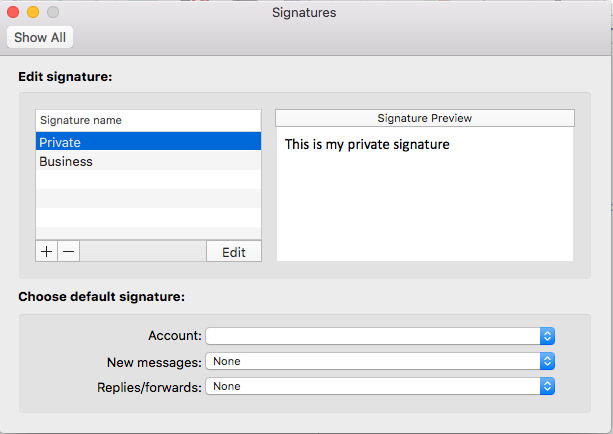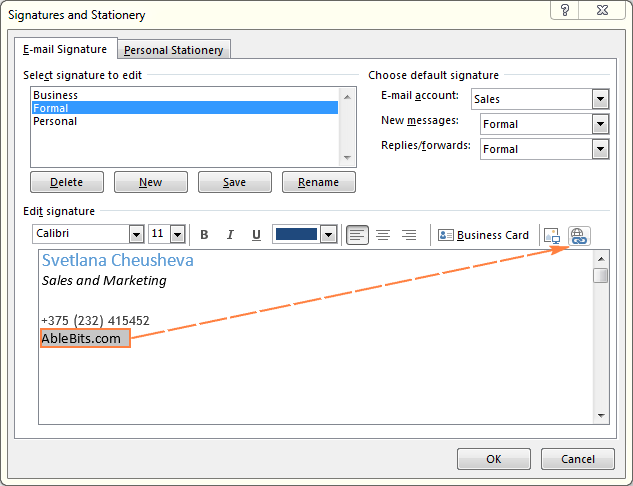

There are various ways to do this of course but there are a couple of common things to keep in mind when going for a custom script If you are not using Exchange or are looking for a client (Outlook) level solution to generate your signatures, you can do this via a script. New-TransportRule -Name 'Corporate External Signature and Disclaimer' -FromScope 'InOrganization' -SentToScope 'NotInOrganization' -ApplyHtmlDisclaimerText 'Yours faithfully,%%DisplayName%%%%Title%%The following disclaimer applies to this message.' -ApplyHtmlDisclaimerFallbackAction 'Wrap' Outlook Signature deployment via script The example above becomes the following PowerShell command

They can later be managed via the Disable, Enable, Get, Set and Remove cmdlets. Signatures and Disclaimers can also be created via the New-TransportRule Exchange PowerShell cmdlet. For more details to create such links see Add Teams, Skype, Zoom and other chat, call or meet now links to your signature. You can also automatically include a personalized “Chat with me in Teams” link within the signature or include links for other online meeting tools such as Skype, Zoom, Cisco Jabber or Slack. Supported variablesĪs mentioned before, you can use practically any Active Directory user property as a variable by placing it between double percent character likeīelow you’ll find some frequently used AD properties for signatures UserLogonName
Press the “Save” button to create and activate the Transport Rule.Ĭreating an Disclaimer rule in the Exchange Admin Center. Optionally Set any exceptions, auditing or other options for the rule. Click on the “Select one…” link to select a fallback option when the disclaimer can’t be added Įnclose the original message in a new message envelope and add the disclaimer into the new message.ĭon’t deliver the message and send an NDR to the sender.ĭeliver the message but without the disclaimer. Any HTML tags are automatically stripped when the message format is Plain Text. The signature including all HTML tags can be up 5,000 characters long. You can use practically any Active Directory user property as a variable by placing it between double percent character like %%DisplayName%%. You can use HTML, inline CSS and links to images stored on a web server by using the img tag. Click on the “Enter text…” link to construct your Signature. Apply a disclaimer to the message…-> append a disclaimer. 
From the “Do the following…” list select:.The recipient…-> is external/internal-> Outside the organization.
 The sender…-> is external/internal-> Inside the organization. Press the “add condition” button to add the second condition Select the following “Apply this rule if…” conditions. Click on the “More options…” link to show all rule conditions and actions and to be able to add more conditions. For instance: Corporate External Signature and Disclaimer. If a menu opens up, select: Apply disclaimers… (if not, continue to the next step). In the Rules section, click on the + icon to create a new rule. When using Microsoft 365, you could use this direct link. From the Navigation Pane on the left, select: Mail Flow. Logon to the Exchange Admin Center (ECP). Outlook Signature deployment via scriptsĮxchange 2013, 2016, 2019 and Microsoft 365 Exchange OnlineĮxchange 2013, 2016, 2019 and Microsoft 365 Exchange Online offer support for HTML based signatures and retrieving user information from Active Directory to dynamically create personalized signatures as well as static disclaimers. Finally, an overview of 3rd party solutions is provided for alternative solutions. Also, additional methods are being discussed to manage it without an Exchange server. This guide discusses the features that Exchange offers to create and manage signatures at server level. You can lock down the access to the Signature feature by using Group Policies but that still doesn’t take away the issue of creating/generating a standard signature in the first place and deploying it to the users. Outlook offers no direct means to do this since the Signature feature in Outlook is a client side feature and thus users can create and modify their own signature. Most companies want to include at least a “disclaimer” text, others want to control the amount of contact details as well and still others want to control the entire look and feel of the signature. Within a company, you usually want to control the signatures that users are using when sending mail outside of the company.
The sender…-> is external/internal-> Inside the organization. Press the “add condition” button to add the second condition Select the following “Apply this rule if…” conditions. Click on the “More options…” link to show all rule conditions and actions and to be able to add more conditions. For instance: Corporate External Signature and Disclaimer. If a menu opens up, select: Apply disclaimers… (if not, continue to the next step). In the Rules section, click on the + icon to create a new rule. When using Microsoft 365, you could use this direct link. From the Navigation Pane on the left, select: Mail Flow. Logon to the Exchange Admin Center (ECP). Outlook Signature deployment via scriptsĮxchange 2013, 2016, 2019 and Microsoft 365 Exchange OnlineĮxchange 2013, 2016, 2019 and Microsoft 365 Exchange Online offer support for HTML based signatures and retrieving user information from Active Directory to dynamically create personalized signatures as well as static disclaimers. Finally, an overview of 3rd party solutions is provided for alternative solutions. Also, additional methods are being discussed to manage it without an Exchange server. This guide discusses the features that Exchange offers to create and manage signatures at server level. You can lock down the access to the Signature feature by using Group Policies but that still doesn’t take away the issue of creating/generating a standard signature in the first place and deploying it to the users. Outlook offers no direct means to do this since the Signature feature in Outlook is a client side feature and thus users can create and modify their own signature. Most companies want to include at least a “disclaimer” text, others want to control the amount of contact details as well and still others want to control the entire look and feel of the signature. Within a company, you usually want to control the signatures that users are using when sending mail outside of the company.








 0 kommentar(er)
0 kommentar(er)
